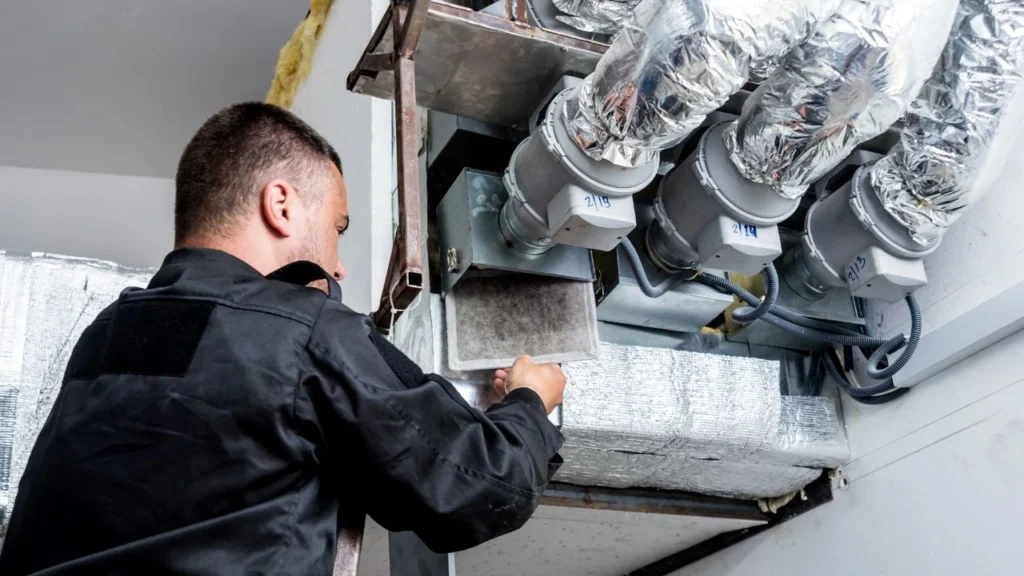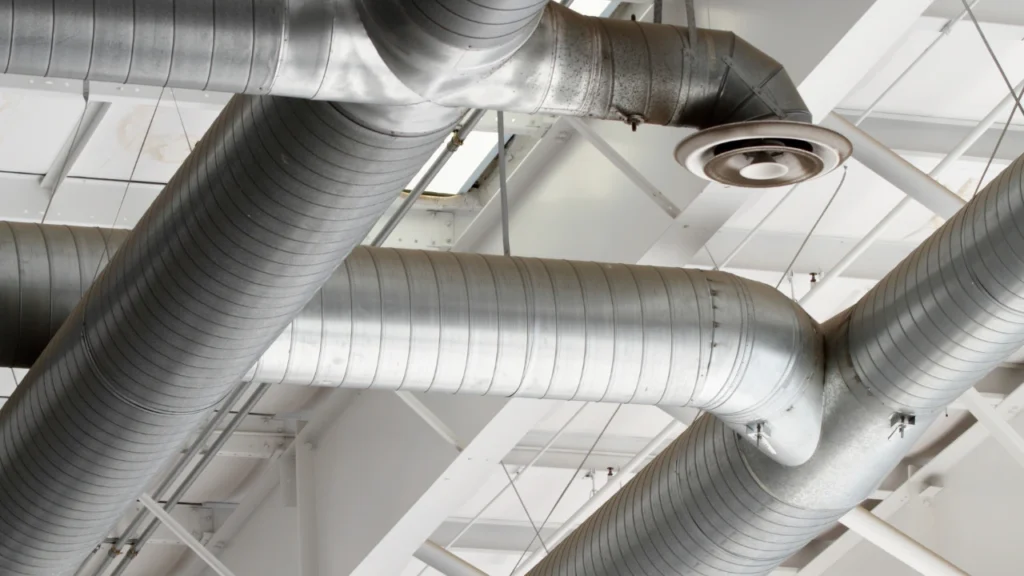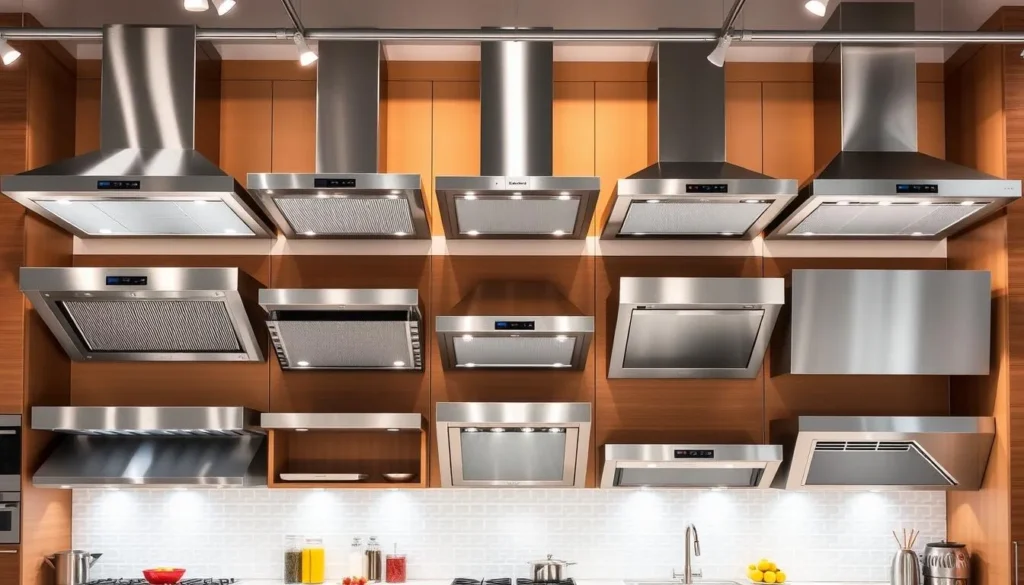Imagine a busy restaurant kitchen. Steaks sizzle on the grill. Sauces simmer, filling the air with tempting aromas. Chefs shout orders back and forth. Amid this buzz, the kitchen ventilation system works silently, keeping the air clean and comfortable. How do commercial kitchen ventilation systems work to maintain this environment?
These systems are vital in food service. They remove smoke, steam, and cooking odors. Without them, kitchens would be unsafe and unpleasant. Most restaurants rely on ventilation to create a good dining experience.
Ventilation systems are like lungs for kitchens. They keep the air fresh and prevent dangerous gas buildup. This is crucial for both staff and customers. Good ventilation helps maintain food quality and customer satisfaction.
How Do Kitchen Ventilation Systems Work?
Kitchen ventilation systems keep cooking areas safe and comfy. They remove airborne contaminants, smoke, and odors. There are two main types: vented (external ducted) and non-vented (ductless) systems.
Vented systems, or ducted range hoods, sit above the cooking surface. They connect to a duct that leads outside. These systems create negative pressure to draw out polluted air.
Airflow needs depend on kitchen size, equipment, and cooking intensity. A good system removes fumes at the source. It ensures comfy air movement and provides enough air for appliance combustion.
Importance of Proper Ventilation in Kitchens
Proper ventilation is crucial for many reasons:
- Maintains air quality by removing pollutants and odors
- Reduces fire risks by eliminating excess heat and grease buildup
- Prevents moisture accumulation and mold growth
- Extends the lifespan of kitchen appliances
- Creates a more comfortable working environment for kitchen staff
Regular upkeep ensures ventilation systems work well. Clean the exhaust hood monthly and ductwork yearly. Don’t forget to clean grease traps monthly.
Following these tips helps create a safe, efficient kitchen. It also makes for a more comfortable cooking space.
Common Ventilation Challenges in Kitchens

Challenges in Kitchen Ventilation
Effective kitchen ventilation is crucial for managing heat, humidity, and air quality, especially in commercial settings. Gas ovens can emit dangerous levels of carbon monoxide, and without proper ventilation, grease, odors, and airborne particles can accumulate, creating health and safety risks.
Residential vs. Commercial Perspectives
Only 13% of homeowners in residential kitchens regularly use exhaust fans, often citing noise or underestimating their importance. This complacency isn’t an option in commercial kitchens, where ventilation systems must handle heavy grease loads and stringent air quality standards. The need for robust exhaust systems is magnified in restaurants, where noise, energy efficiency, and odor control are constant concerns.
Common Issues in Commercial Kitchens
- Ineffective Ventilation: Recirculating range hoods that don’t vent air outdoors can compromise air quality.
- Design Challenges: Kitchens with varied equipment and fixed-pane windows may struggle with airflow, often requiring makeup air systems to balance pressure.
- Noise and Usability: Loud ventilation systems can discourage use, contributing to poor air quality. Only 10% of users are fully satisfied with their current systems, but with proper education, 64% would use ventilation devices more consistently.
The Path Forward
Addressing these issues requires careful planning and selecting the right components, from energy-efficient range hoods to quiet systems that encourage regular use. Commercial kitchens can improve air quality and create safer, more comfortable environments by prioritizing education and system design.
Types of Kitchen Ventilation Systems
File Name: air-filtration-system-ductwork
Alt text: Stainless steel air filtration ducts in commercial kitchen.
Restaurant ventilation design is vital for a safe cooking environment. Different commercial kitchen hoods suit various kitchen layouts and needs. Let’s explore the main types.
Exhaust Hoods
Exhaust hoods are the most common kitchen ventilation system. They come in two main types: external and recirculating venting. External hoods expel air outside while recirculating models filter and return it.
Recirculating hoods need filter cleaning twice a year for efficiency. This maintenance keeps the air clean and the system working well.
Wall-Mounted Hoods
Wall-mounted canopy range hoods work best for appliances against a wall. They offer various CFM options and design features. These hoods come in sizes from 30 to 48 inches wide.
Island Hoods
Island range hoods are perfect for central cooking areas. They provide strong venting and high-end features. Ducted island hoods perform better but are harder to install.
Downdraft Ventilation Systems
Downdraft systems are built into cooktops, drawing air downward. They suit open-concept kitchens and handle high-heat gas burners. These systems offer a sleek design when traditional hoods won’t work.
Choose a ventilation system based on kitchen size, layout, and cooking volume. The hood should be slightly wider than the cooktop. Good ventilation ensures a clean, safe kitchen and boosts efficiency.
Components of Kitchen Ventilation Systems

Kitchen ventilation systems are vital for a clean and safe cooking space. These systems have key parts that work together to remove pollutants and boost air quality.
Ductwork
Ductwork is the core of kitchen ventilation systems. It moves dirty air from the cooking area to the outside. Good ductwork design is key for smooth airflow and stopping grease buildup.
Filters
Filters are crucial in kitchen air filtration systems. They catch grease, smoke, and smells. This stops these pollutants from going back into the kitchen or outside.
Two main types of filters are used in kitchen ventilation:
Grease Filters
Grease filters are the first defense in kitchen ventilation systems. They trap oil and grease particles. This prevents fires by keeping grease out of the ductwork.
Regular cleaning of grease filters keeps the system working well.
Charcoal Filters
Charcoal filters are often used in ductless ventilation systems. They soak up smells and smoke, cleaning the air before it goes back into the kitchen.
These filters need to be replaced often to work well.
Choosing and caring for these parts is key for good kitchen ventilation. Range hoods can vent outside or filter and recirculate air. Regular cleaning and new filters keep kitchen hood vents working well.
Designing an Effective Kitchen Ventilation System

A top-notch kitchen ventilation system needs careful planning. It must meet codes and regulations while ensuring optimal airflow. Let’s explore how to design such a system.
Determining Ventilation Needs
Assess your kitchen’s size, layout, and cooking equipment. This helps determine your ventilation needs. Calculate required airflow rates based on your specific kitchen setup.
Select appropriate hood types that match your kitchen’s requirements. This step is crucial for effective ventilation.
Choosing the Right Ventilation System
Consider your kitchen’s size, cooking volume, and local regulations. Energy-efficient equipment can lead to significant savings. Work with kitchen ventilation experts to find efficient solutions.
These solutions should meet airflow requirements for kitchens. Expert advice ensures you choose the best system.
Placement and Installation Considerations
Proper placement and installation are vital for optimal performance. Consider factors like hood overhang, duct layout, and makeup air systems. Increasing hood overhangs can enhance ventilation efficiency.
It also minimizes the intake of conditioned air. Seal gaps behind cooking and ventilation equipment. This prevents air loss and improves overall efficiency.
Partner with reputable companies for engineering support, drawings, and surveys. This ensures your kitchen ventilation system meets all necessary codes and regulations.
Maintenance and Cleaning of Kitchen Ventilation Systems
Clean kitchen ventilation systems prevent fires and keep the air fresh. Regular upkeep boosts performance and makes equipment last longer. It’s vital for a safe kitchen environment.
Regular Cleaning Routines
Removing kitchen grease requires a steady cleaning plan. Clean extraction filters every 1-2 weeks with hot, soapy water and degreaser.
Wipe extraction vents weekly to stop sticky buildup. In commercial kitchens, degrease collector panels yearly, or more if used heavily.
Troubleshooting Common Issues
Poor vent care can block ducts, increase noise, and cause bad smells. To fix these problems:
- Replace filters every two weeks for effective odor control
- Check for grease buildup in ducts regularly
- Ensure proper isolation of deep fryers from open-flame cooking appliances
- Keep a K-type fire extinguisher handy in kitchens without automatic fire-extinguishing systems
Clean vents reduce fire risks and keep kitchens running well. Schedule yearly checks for auto fire systems in cooking hoods.
These steps help prevent kitchen odors and maintain a safe workspace. Your kitchen will stay clean, safe, and efficient.
Innovations and Trends in Kitchen Ventilation Systems
Kitchen exhaust fans have evolved significantly. Modern restaurant ventilation focuses on efficiency, smart tech, and eco-friendly materials. These advances create safer, cleaner, and more cost-effective kitchens.
Energy-Efficient Ventilation Solutions
Today’s kitchen ventilation systems are far more energy-efficient. They use smart tech to adjust fan speed based on cooking activity. This can reduce energy use by 30%.
New systems also incorporate LED lighting. These bulbs use up to 75% less energy than traditional options.
Smart Ventilation Systems
Smart technology is revolutionizing kitchen air management. New systems learn cooking habits and adjust ventilation patterns automatically. They use sensors to detect air quality and cooking byproducts.
These smart-systems make real-time adjustments for optimal performance. This ensures the kitchen air stays clean and fresh.
Use of Sustainable Materials
Eco-friendly options are now crucial in kitchen ventilation design. Energy Star-certified systems help reduce energy use and costs. Advanced filtering in modern range hoods captures over 90% of cooking pollutants.
This can improve indoor air quality by 50%. These improvements create healthier and more sustainable kitchen environments.
The future of kitchen ventilation is promising. Restaurant owners can expect cleaner air and lower energy costs. Smarter, more efficient systems are becoming the norm.
As technology advances, we’ll likely see even more improvements. Kitchen exhaust fans and overall ventilation design will continue to evolve.
How Do Kitchen Ventilation Systems Work to Improve Air Quality?
Kitchen ventilation systems improve air quality by removing pollutants, controlling heat, and managing humidity, which helps prevent mold growth. Options like ducted range hoods, downdraft systems, and ventilated ceilings suit different kitchen layouts and needs, either venting air outside or filtering it for recirculation.
In larger kitchens, commercial-grade hoods efficiently clear smoke, grease, and odors. Choosing the right kitchen ventilation system and maintaining it regularly ensures a clean, safe, and comfortable cooking environment for years to come.
FAQ
What is the best ventilation system for a kitchen?
Choose a ventilation system with external ducts. If possible, opt for ventilation systems that vent to the exterior rather than recirculating air, especially if you have a gas range. Ductless hoods are acceptable if it’s the only option, but an external exhaust hood is more effective at preventing odors from lingering indoors.
How much does it cost to install a ventilation system in the kitchen?
Most people spend between $650 and $2,500 on installation. Range hood installation typically costs between $650 and $2,500, with an average cost of around $1,750. Prices vary depending on the type of range hood chosen and local labor rates.
What is proper ventilation in a kitchen?
An adequate kitchen ventilation system should remove cooking fumes at the source, as close as possible to the cooking equipment. It should also remove excess hot air and introduce cool, clean air, maintaining a comfortable environment in the kitchen.
How do I determine the right size and capacity for a kitchen ventilation system?
To determine the appropriate size and capacity for a kitchen ventilation system, consider both the size of your kitchen and the type of cooking equipment you use. As a general guideline, choose a range hood that can provide a minimum of 100 cubic feet per minute (CFM) of air movement for every 12 inches of stove width. Additionally, ensure that your system complies with any local building codes or regulations.
What are the benefits of installing an efficient kitchen ventilation system?
Installing an efficient kitchen ventilation system helps reduce indoor air pollution, removes excess heat, and minimizes cooking odors. A well-ventilated kitchen can improve indoor air quality and create a more comfortable cooking environment.
Resources
https://blowerfab.com/2024/02/12/commercial-kitchen-ventilation-system/
https://caplans.ca/2021/04/28/types-of-kitchen-ventilation-systems/
https://www.lotuscommercial.com.au/how-do-kitchen-exhaust-systems-work






